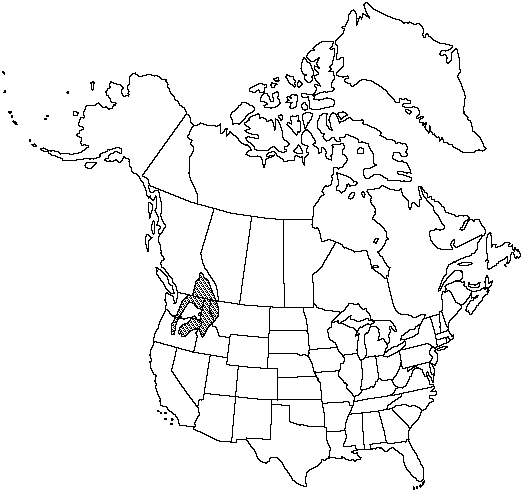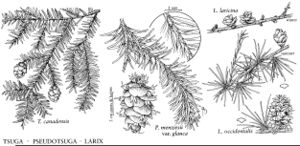Larix occidentalis
N. Amer. Sylv. 3: 143, plate 120. 1849.
Trees to 50m; trunk to 2m diam., usually (when forest grown) branch-free over most of height; crown short, conic. Bark reddish-brown, scaly, with deep furrows between flat, flaky, cinnamon-colored plates. Branches horizontal, occasionally drooping in lower crown of open-grown trees; twigs orangebrown, initially pubescent, becoming glabrous or very sparsely pubescent during first-year. Buds dark-brown, generally puberulent, scale margins erose. Leaves of short-shoots 2–5cm × 0.65–0.80mm, 0.4–0.6mm thick, keeled abaxially, with shallow convex midrib adaxially, pale green; resin canals 20–50 µm from margins, each surrounded by 5–7 epithelial cells. Seed-cones 2–3 × 1.3–1.6cm, on curved stalks 2.5–4.5 × 3.5–5mm; scales 45–55, margins entire, adaxial surface pubescent; bracts tipped by awn to 3mm, exceeding scales by ca. 4mm. Pollen 71–84µm diam. Seeds reddish-brown, body 3mm, wing 6mm. 2n =24.
Habitat: Mountain valleys and lower slopes
Elevation: 500–1600m
Distribution

B.C., Idaho, Mont., Oreg., Wash.
Discussion
Western larch, when forest grown, is usually branch-free over most of its height. This is one of the most valuable timber-producing species in western North America. Its wood is made into framing, railway ties, pilings, exterior and interior finishing work, and pulp. In some localities it is the preferred firewood.
Selected References
None.
Lower Taxa
"thin" is not a number."branch-free" is not a number.
